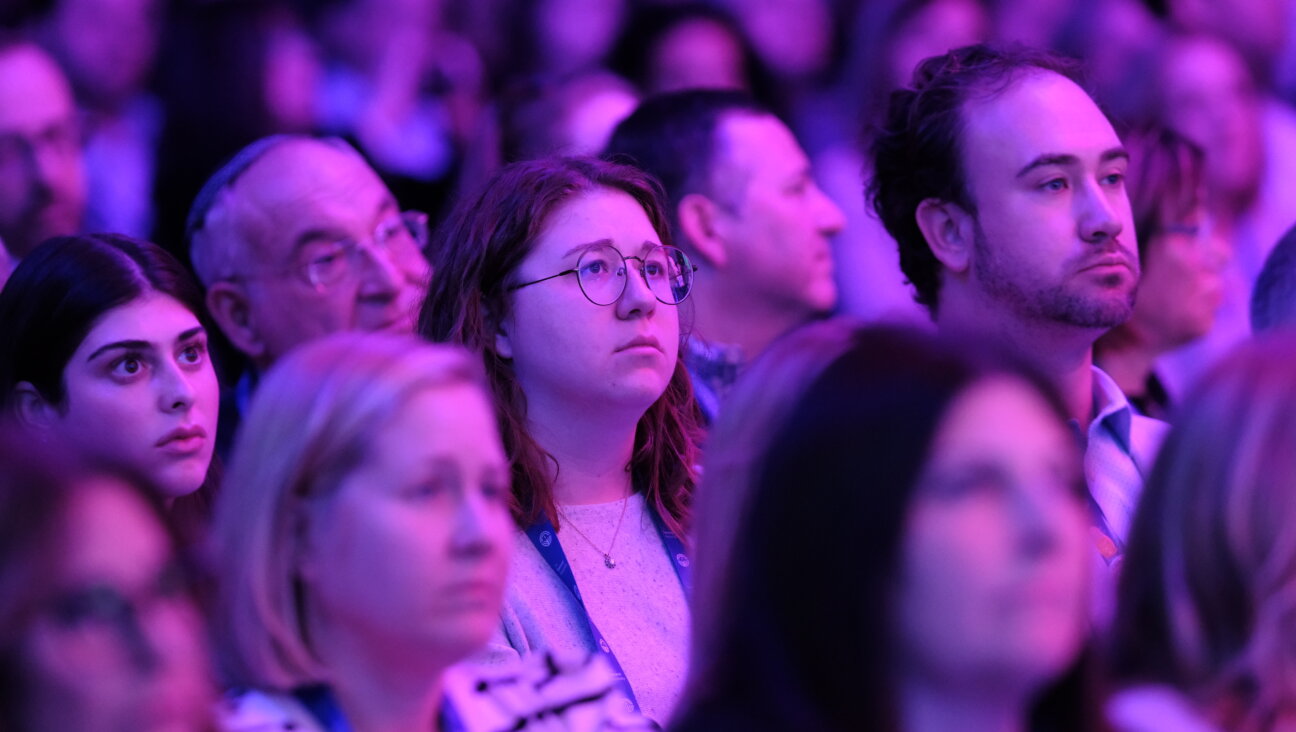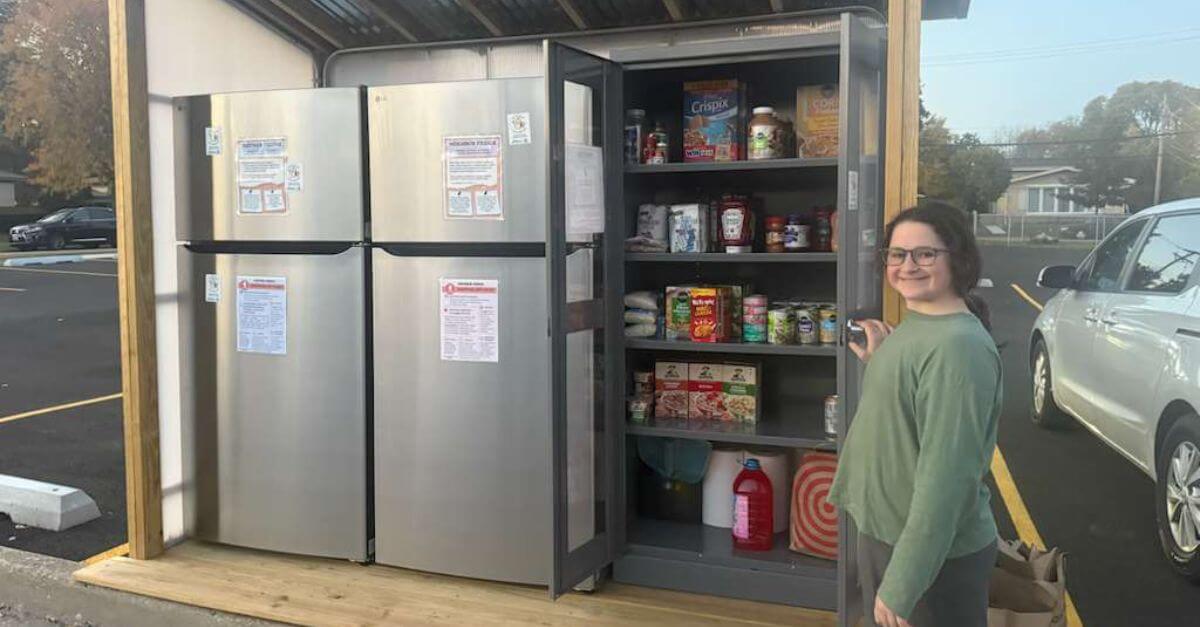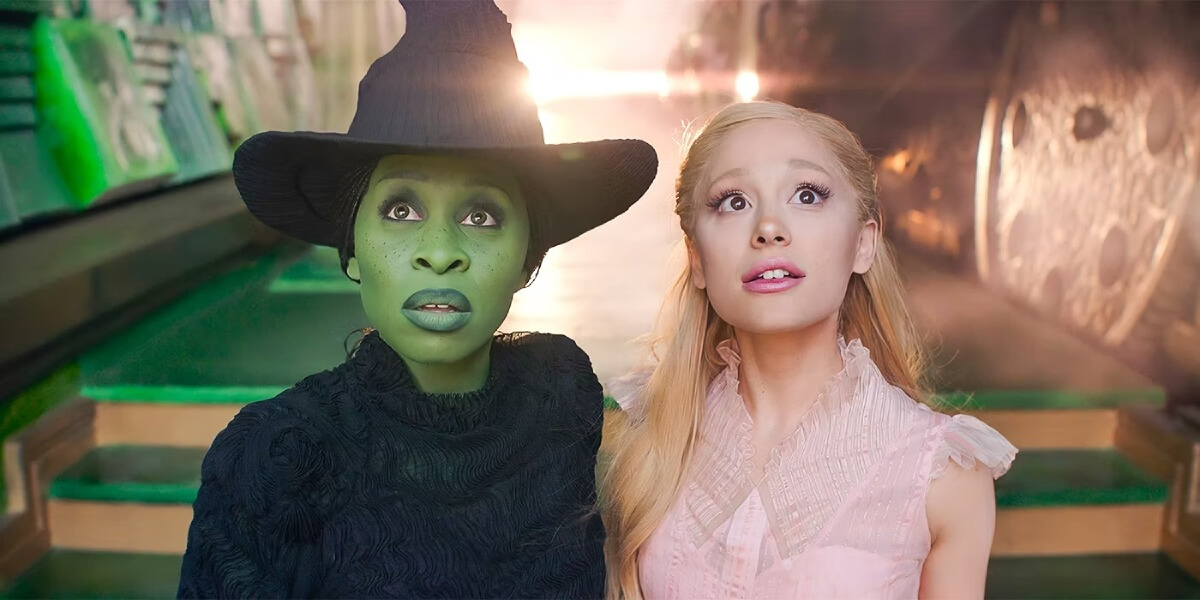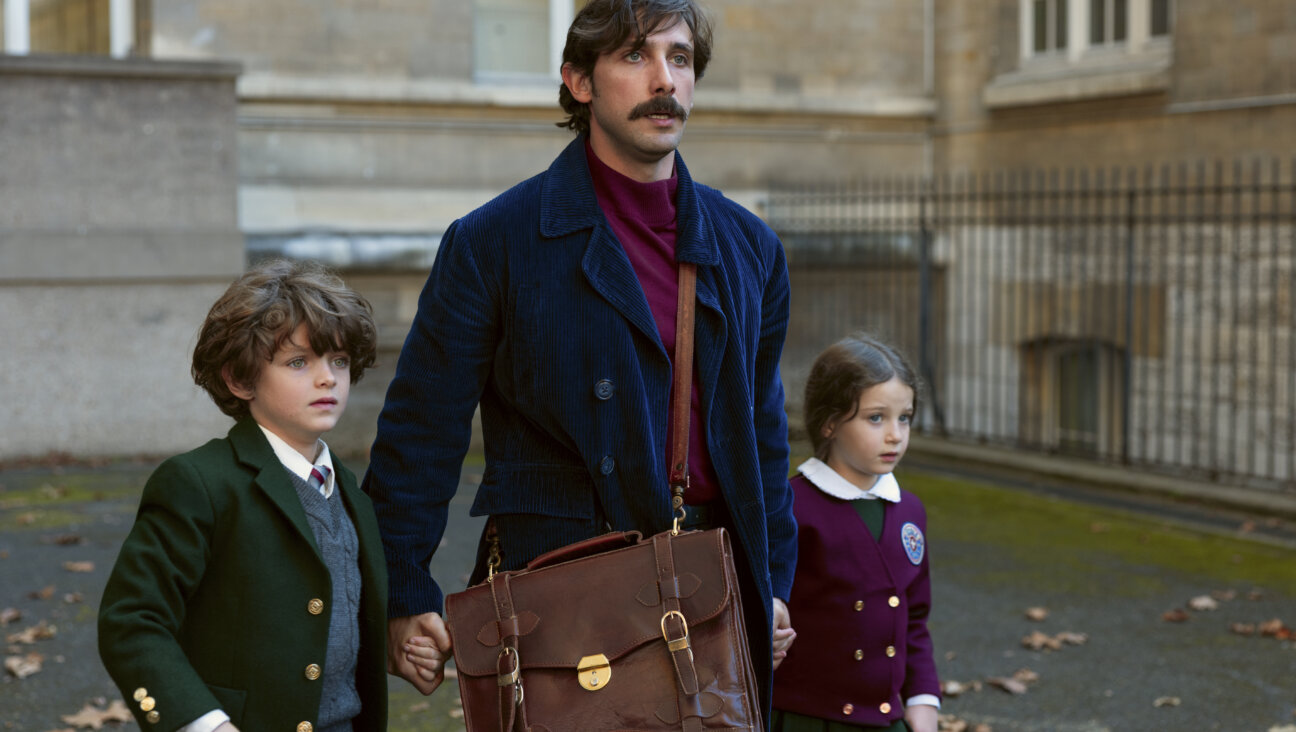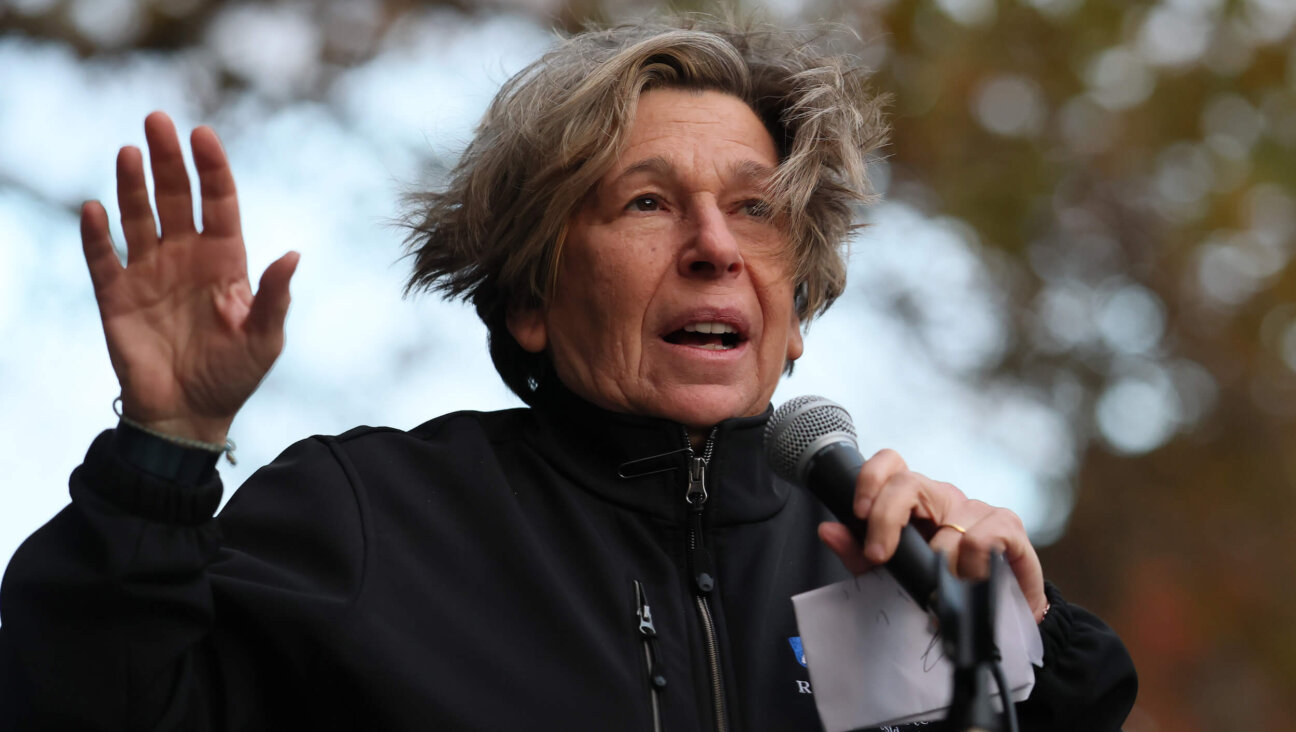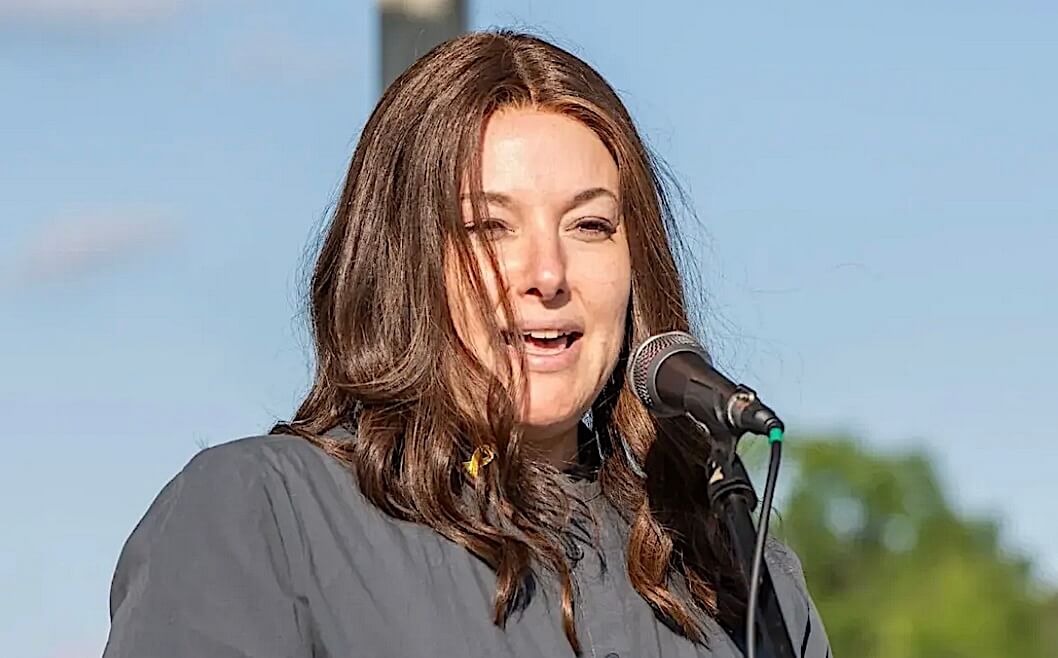A remarkable photo exhibit captures ‘a joyful moment’ of Black-Jewish unity in Miami Beach

Graphic by Angelie Zaslavsky
On fabled Miami Beach, land of sunshine and escape, Blacks and Jews share a shameful history of discrimination and exclusion.
Into the 1970s, Blacks were prohibited by racist “sundown” laws from swimming or spending the night on the Beach, or to be there without a work ID. Jews could not buy or rent property on most of the Beach until after World War II, and early hotels advertised with signs like “Gentiles only” or “Always a view, Never a Jew.”
Now a Miami photo exhibit, “Shared Spaces,” captures the two groups together during a brief, liberating – if still fraught – moment in the late ’70s which has implications that still reverberate in the present.
”Group
“There’s a sense of empowerment,” said Carl Juste, a Haitian-American photojournalist and community art organizer presenting Shared Spaces at his Iris PhotoCollective ArtSpace in the Little Haiti neighborhood. “Empowerment in the relationships and in the participants on both sides, demonstrated in the space that was being occupied. Space in terms of how both communities were somewhat exiled, in terms of struggle and in terms of Miami’s history.
“That’s the magic of this collection,” he said. “We have to look at them and imagine better possibilities.”
The photos are by Andy Sweet, a young Jewish photographer whose pictures of the elderly Jews who filled a then-dilapidated South Beach have become locally famous in recent years. Sweet’s work has been featured in exhibits, a book, and a documentary, “The Last Resort,” that played major festivals and earned critical accolades.

Carl Juste By Jordan Levin
This, however, is the first time Sweet’s pictures of Blacks and Jews, at the time a largely aging, white community, have been displayed.
Like Sweet’s other photos, they were taken in the late ’70s, as Blacks were finally allowed into the once-forbidden paradise. It was also the final moment for South Beach as home to an eccentric, vibrant Jewish community of former factory workers and Holocaust survivors, before they were decimated by age and the area’s transformation into a glamorous international resort.
Juste deliberately opened “Shared Spaces,” which runs through July 31, on Memorial Day weekend, which in recent years has become known as Urban Beach Week, drawing crowds of Black tourists. City officials and police have often responded with draconian – and sometimes deadly – security, prompting charges of racism heightened by the Beach’s history of segregation.
Miami has seen rising antisemitism in the last several years, particularly in recent months, with a spate of incidents during the fighting between Israel and Hamas in May.
Blacks Lives Matter protests roiled the city in the summer of 2020, a rare wave of racial justice activism in this Southern, Hispanic-dominated city. Meanwhile, tension has risen in Miami, as it has elsewhere, between Black activists and largely white Jews over the Israeli-Palestinian conflict.
“Shared Spaces” links all these strands. Sweet’s photos are vivid with spontaneity — he only shot each once — charged with poignance, exuberance and contradiction.
In one photo, a frail, elderly Jewish man and a robust Black policewoman stare warily at the camera. In another, a Black man is the center of attention in a line of bikini-clad white women on the edge of the sea. A Black little girl, beaming with happiness, clutches a shabby white doll; it’s a Chatty Cathy, a treasured early 1960’s toy that looks like it’s been through some very hard times. A Black woman caretaker kneels next to her charge, an elderly white Jewish woman, both their faces lit up by beaming smiles.

“Girl with Doll”
Carl Juste: “Young and old, but with a doll. That doll looks like she had a bad night! The girl is so happy with something most white girls might not want to hold, that might have been discarded.” By Andy Sweet
“Their relationship is in the light on their faces,” said Juste, who has honed his visual analysis skills in 32 years shooting for the Miami Herald. “Visually, metaphorically, when we decide to share a space, it brightens both of us.”
Ed Christin, archivist for the Andy Sweet Photo Legacy, conceived the show with Juste. “I was struck by what an empathetic eye Andy had,” Christin said. As a middle-class Jewish kid “it would have been easy for him to ignore Black people. He could have said they’re not part of my story. But to him they’re all part of the same story.”

Historian Marvin Dunn and Andy Sweet Photo Legacy archivist Ed Christin By Jordan levin
At the show’s opening on May 28, the IPC filled with a small, excited, racially-mixed crowd. Among them was Marvin Dunn, a locally-renowned historian and author of seminal books on Blacks in Miami and Florida.
“These are beautiful, they capture something we haven’t seen,” said a beaming Dunn. He pointed to a photo of a Black waiter dancing with Jewish women at a New Year’s Eve party. “It’s a joyful moment, a place we were allowed to be here.”
Dunn, 80, lived Miami Beach’s history of discrimination. As a child, he, his father and brothers did yard work for Jewish homeowners on the Beach in the 60’s, while his mother worked as a maid. He remembers the work IDs, the ingrained oppressiveness of segregation; he tells the story of how, when D.A. Dorsey, Miami’s first Black millionaire, bought part of Fisher Island — now the richest zip code in the country— in 1918 to provide beach access to his fellow Blacks, he was soon forced to sell.

Golden Years 1980 - ©Andy Sweet
Carl Juste: “He’s wearing his finest. The way he’s leaning, he’s in charge. They both have this hidden smile, like they share a secret. Behind a curtain. I remember these hotels, this carpet, the oranges, the greens. Andy uses everything in the frame to put you in that space and time.” By Andy Sweet
“From the very beginning there has been an effort to make sure Blacks were not on Miami Beach,” Dunn said.
Jews softened the sting of that inequality. In 1953 the Jewish-owned Blackstone hotel was the first in the area to welcome Blacks, with a church convention, to stay overnight.
“They were different,” said Dunn. He said Jewish employers called his father Mr. Dunn, not James. They gave his brothers graduation gifts and attended their ceremonies. They gave his mother food and clothing.
“They were very generous,” Dunn said. “My father trusted Jews, I think, and he did not trust most white people.”
Dunn came to know Jews as allies as a civil rights activist in college. He returned to Miami with a Ph.D in the ’70s, as Blacks began going to the hotels, restaurants, and beaches closed to them for so long.

Dancers in the Lobby of the Starlite Hotel/New Year’s Eve 1978 - ©Andy Sweet
Carl Juste: “This is all about proximity. Look at her gaze. Look how he’s focused on her. How she’s just enjoying that space and he’s enjoying that space.” By Andy Sweet
“This show means we’re going to have visual representation of a dramatic period of social change in Miami when Blacks were able for the first time to cross social barriers in a place undergoing a lot of change,” said Dunn, who is married to a Jewish woman. “It’s important for future generations to have this glimpse of Jewish and Black history.”
Sweet was brutally murdered in 1982 at the age of 28. Sweet’s family is donating the Shared Spaces photos to an archive named for Dunn at Florida International University, where he was a professor. Sales proceeds will be shared by the IPC and The Center for Racial Justice, also founded by Dunn, at Barry University.

Young Woman at Prom with her Date/Miami Beach Convention Center 1978 - ©Andy Sweet
Carl Juste: “They’re almost holding court. This is the queen. It’s a very genuine smile, owning a physical space, a space in time – prom, the highlight of their year.” By Andy Sweet
Also at the opening was Bonna Cooper, 60, who said that, as a girl, her family made rare visits to the Beach only as a large, tight group. “We had to steal a priceless moment in fear,” she said. Her mother also worked as a maid for a Jewish woman – who paid to fix her teeth, gave her professional clothes, and helped her start a career as a teacher. Now Cooper exults in going to the Beach. “We’ve come a long way,” she said. “I can’t walk around being mad at the world. I don’t understand why people can’t coexist. We’re not meant to be alike.”

Drag Performers at Fontainebleau Hotel 1978 - ©Andy Sweet
Carl Juste: “Someone got first place Miss Florida – of course she’s the lighter one. Imagine being in that space of gender appropriation then.” By Andy Sweet
But many Black Miamians still don’t feel welcome on the Beach.
Walter James P., 29, who came to Shared Spaces because he manages a Jewish apartment complex, said he and his friends mostly went to Virginia Key, the beach reserved for Blacks during segregation, or Haulover, another Black-friendly beach further north. “The Beach was for tourists,” he said, adding that the exhibit gave him a “a sense of history that’s unknown to me.”
”Woman
Susan Gladstone, a native Miamian and executive director of the Jewish Museum of Florida – FIU, on South Beach, remembered how, as a little girl, her parents took her to New Year’s Eve parties at South Beach hotels, filled with elderly Jews celebrating the homely paradise where they sang, swam and worshipped together. Things were very different when Gladstone returned as a young social worker in the late ’70s.

Couple Seated at Dinner Table-1978 - ©Andy Sweet By Andy Sweet
“They were sad,” she said. “Those left were largely widows, a lot of them were alone in these rooms. The rents were getting higher, the buildings getting shabbier.”
Once, a wheelchair-bound woman followed Gladstone to the elevator, begging her not to leave. “It was heartbreaking,” Gladstone said. “A complete deterioration.”
Juste hopes this exhibit will inspire a new sense of possibility. “It’s not a kumbaya thing,” he said. “It’s a baseline that can start new relationships. Where these two unique communities came together.”

Track Star/Flamingo Park 1978 - ©Andy Sweet
Carl Juste: “That sense of pride. We are the champions. She’s embodying her strength. She wants to make a pretty picture of this moment, she’s saying I want to look good, evoking her attitude in the space.” By Andy Sweet


